 By Mark Warburton, Ivory Egg.
By Mark Warburton, Ivory Egg.
In the last few weeks, the Arctic circle has recorded temperatures that are 20°c warmer than is normal for this time of year – which is a pretty stark reminder that the climate is changing rapidly.
As an industry, we can directly influence how much energy that the projects we work on consume. This can be counter-intuitive given the size of some homes, and the customer’s expectation to always be comfortable. However, a well-designed and commissioned control system will ensure the minimum amount of energy is used in order to create the perfect living environment.
There are various heating and cooling sources used in residential projects, all with different requirements for control and commissioning.
UFH
Under-floor heating (UHF) has been used since Roman times, but it is only when it is controlled correctly that it becomes efficient and comfortable. Due to the large thermal mass in the floor, using a proportional integral (PI) control algorithm will prevent over- and under-shooting of the room temperature. Put simply, this type of algorithm decreases the amount of time the floor is on as the room approaches the set point. Monitoring the room using a graph to establish the response time will allow this algorithm to be tuned and the data can also be used to inform when mode changes makes sense.
If hydronic UFH is being used, it is also important to check if it has been configured correctly. Are the flow rates correct for the length of pipe? Is the pump speed sufficient to ensure optimum transfer of heat to the room, and is the flow temperature set to the right level? All these factors make a major difference to the efficiency of the system.
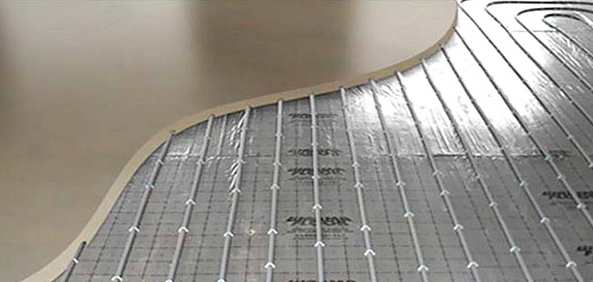
Radiators
Using a motorised actuator valve on a radiator means that minimal energy is used to heat or maintain the temperature in the room, but this only works when paired with a PI controller. Even if the radiators are plumbed back to a central manifold, you can get similar benefits using a manifold controller. But again, the efficiency of the system is also based on how the system has been configured. Has the system been balanced to ensure all radiators are working optimally, and has the pump been sized correctly?

Trench Heating
Increasingly common, trench heaters are used to either replace radiators or to counter the downdraft from large glazed surfaces. They have a fin which can be electric or hydronic, and whilst they are normally just switched, proportional control will create a more efficient system. One option is to use a local thermostat, detecting the specific drop in temperature from the window, controlling a proportional valve. The other more common option is to use the trench heater to back up another heat source such as UFH. Done correctly using a thermostat configured with a secondary heating stage, the trench heater will only be used when the primary heat source can’t meet demand.
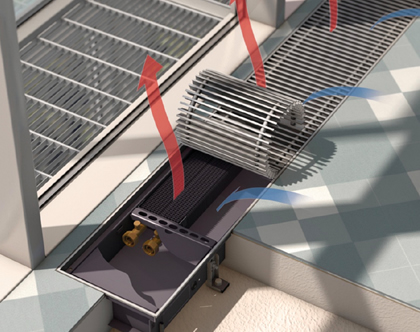
Fan Coils
There are many fan coils available and they are more effective than a standard radiator as the fan increases the transfer of heat (or cooling) to the room.
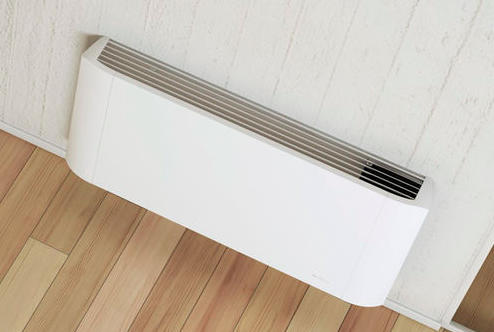
Whilst two-port valves and switch-over relays for the fans are mostly effective, the last few years have seen more units with analogue control over the fans, valves or both. This allows for a much more accurate degree of control which can help the entire system to work more efficiently.
Both fan coils and hydronic trench heaters can require the system to be balanced and the flow rates calculated.
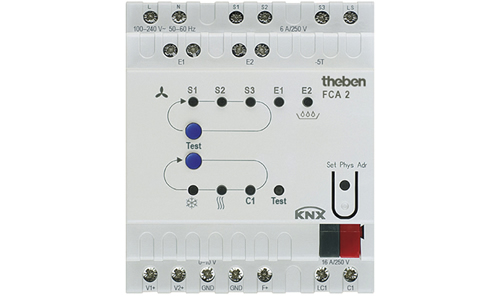
Air-Conditioning
Just to confuse matters, air-conditioning units are often referred to as fan coils but that is where the similarity ends. Internal AC fan coils use an on-board controller to calculate the air flow temperature based on the return air temperature and set point. Using a KNX room thermostat can provide a more representative temperature plus allow integration with the rest of the heating system and user interface.
When the AC controller is set to Auto mode, it will switch between heating and cooling to maintain the set point. This can cause major issues if another heating source is used as they can end up competing, thereby wasting a huge amount of energy. If this is the case, the AC unit should be set to either heating or cooling mode then turned off when the KNX thermostat has calculated that the set point has been reached.
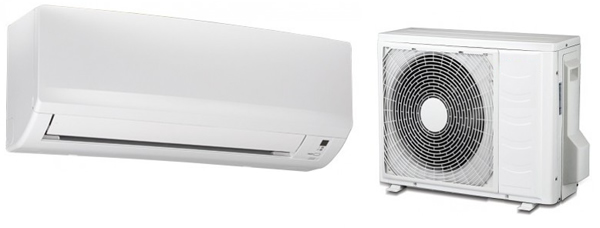
Forced Air
Commonly found in commercial installations, the use of ducted air in residential properties is increasing in popularity. Forced air can be used to heat or cool a room and there are different systems that either change the temperature of the air or the volume of air that is distributed into the room. Integration with a KNX system will allow other parts of the control system to be used to influence the systems. For example, presence detectors can be used to activate the heating, and window contacts can shut down the system to prevent wasted energy.
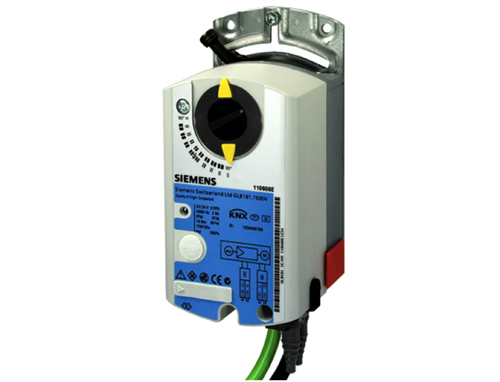
Conclusion
It is easy to list out the sources, the best way to control them and the benefits of integration with other systems, but the reality is the HVAC system is often specified long before the controls are considered. This inevitably leads to a less-than-optimum control scenario with everything operating to the lowest common denominator.
Thankfully with KNX, we can still make major improvements over most systems, but there is more that can be done to educate customers and specifiers. Increases in efficiency not only save the homeowner money, but also make sure that as an industry, we are helping to reduce the consumption of fossil fuels. That is the kind of change we need.
Mark Warburton is the Technical Director of Ivory Egg (UK) Ltd, a supplier of leading KNX products and provider of KNX training courses. Mark is also a regular contributor to KNXtoday magazine.












